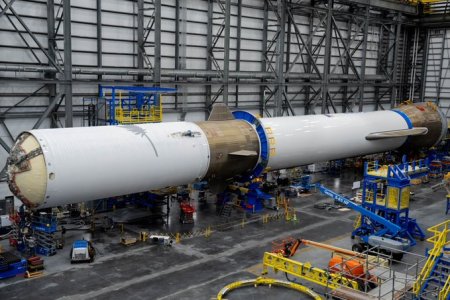European cargo capsule startup raises $160 million in private investment capital

Artist rendition of the proposed Nyx cargo capsule,
taken from The Exploration Company’s website
The French cargo capsule startup The Exploration Company (TEC} announced today that it has raised an additional $160 million in private investment capital, bringing the total raised by the company to $230 million.
Venture capital firms Balderton Capital and Plural were the lead investors in the round which also included French government-backed investment vehicle French Tech Souveraineté and German government-backed fund DeepTech & Climate Fonds.
TEC’s core product is Nyx, a capsule that can be launched from rockets into space carrying passengers and cargo. Nyx is reusable so once it has dropped its payload, it can re-enter the Earth’s atmosphere and be used for the next mission.
The company hopes to do its initial test flight of Nyx in 2028. It flew a demonstrator prototype on the first Ariane-6 launch in July 2024, but was unable to test that prototype’s re-entry capabilities (its prime mission) because of a failure in Ariane-6’s upper stage. It hopes to fly a second demonstrator in 2025 on a Falcon 9.
At the moment company officials say they already signed $800 million in cargo contracts, 90% of which are with the commercial space station companies Axiom Space, Vast, and Starlab. The rest are government contracts.

Artist rendition of the proposed Nyx cargo capsule,
taken from The Exploration Company’s website
The French cargo capsule startup The Exploration Company (TEC} announced today that it has raised an additional $160 million in private investment capital, bringing the total raised by the company to $230 million.
Venture capital firms Balderton Capital and Plural were the lead investors in the round which also included French government-backed investment vehicle French Tech Souveraineté and German government-backed fund DeepTech & Climate Fonds.
TEC’s core product is Nyx, a capsule that can be launched from rockets into space carrying passengers and cargo. Nyx is reusable so once it has dropped its payload, it can re-enter the Earth’s atmosphere and be used for the next mission.
The company hopes to do its initial test flight of Nyx in 2028. It flew a demonstrator prototype on the first Ariane-6 launch in July 2024, but was unable to test that prototype’s re-entry capabilities (its prime mission) because of a failure in Ariane-6’s upper stage. It hopes to fly a second demonstrator in 2025 on a Falcon 9.
At the moment company officials say they already signed $800 million in cargo contracts, 90% of which are with the commercial space station companies Axiom Space, Vast, and Starlab. The rest are government contracts.


